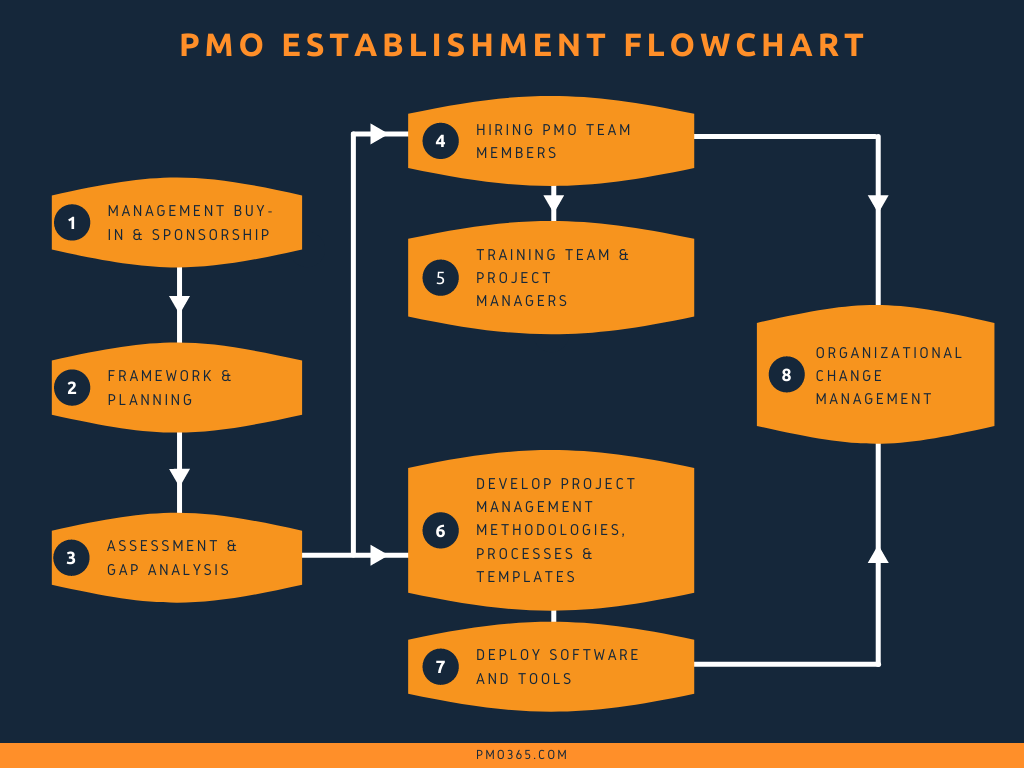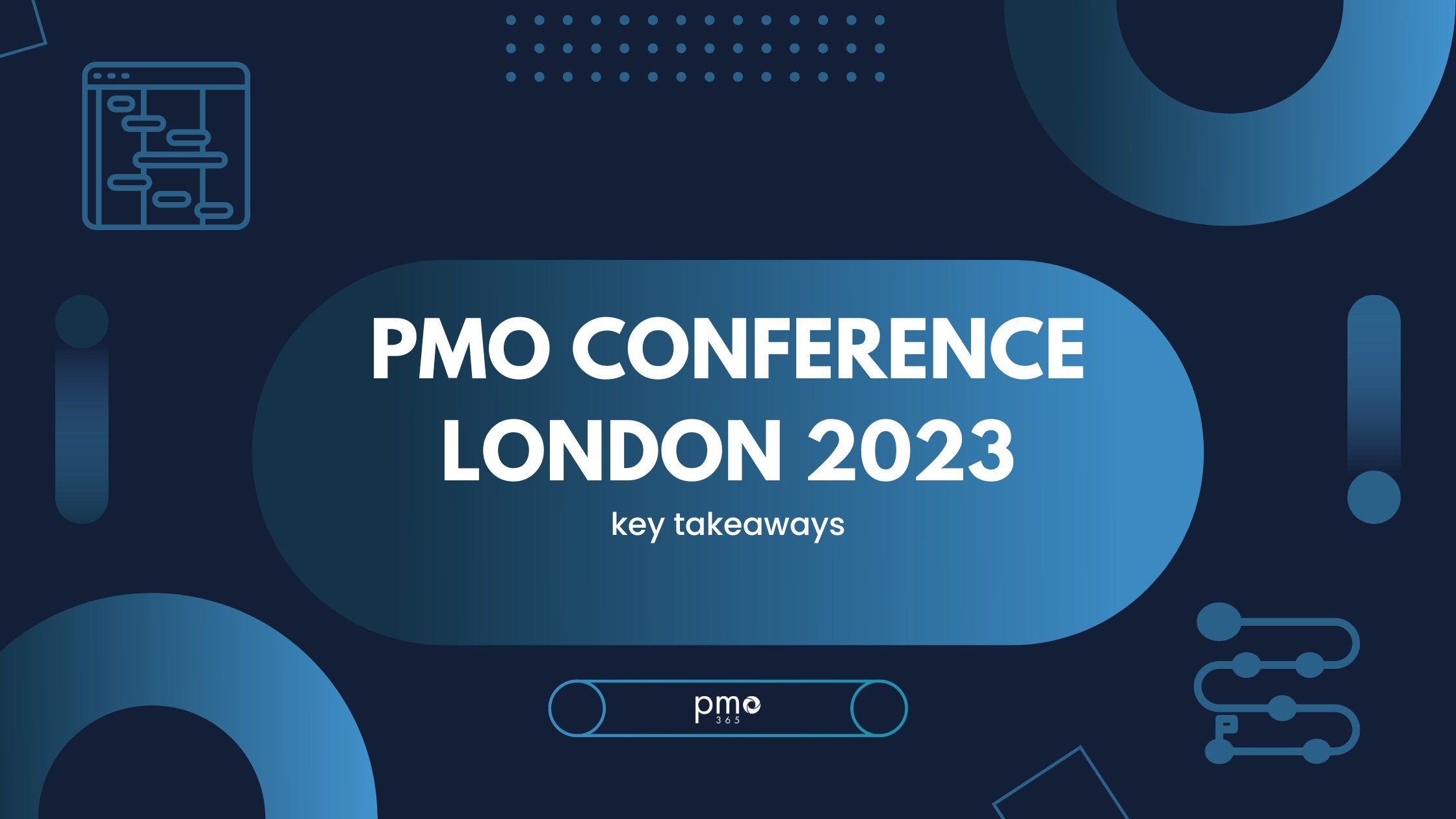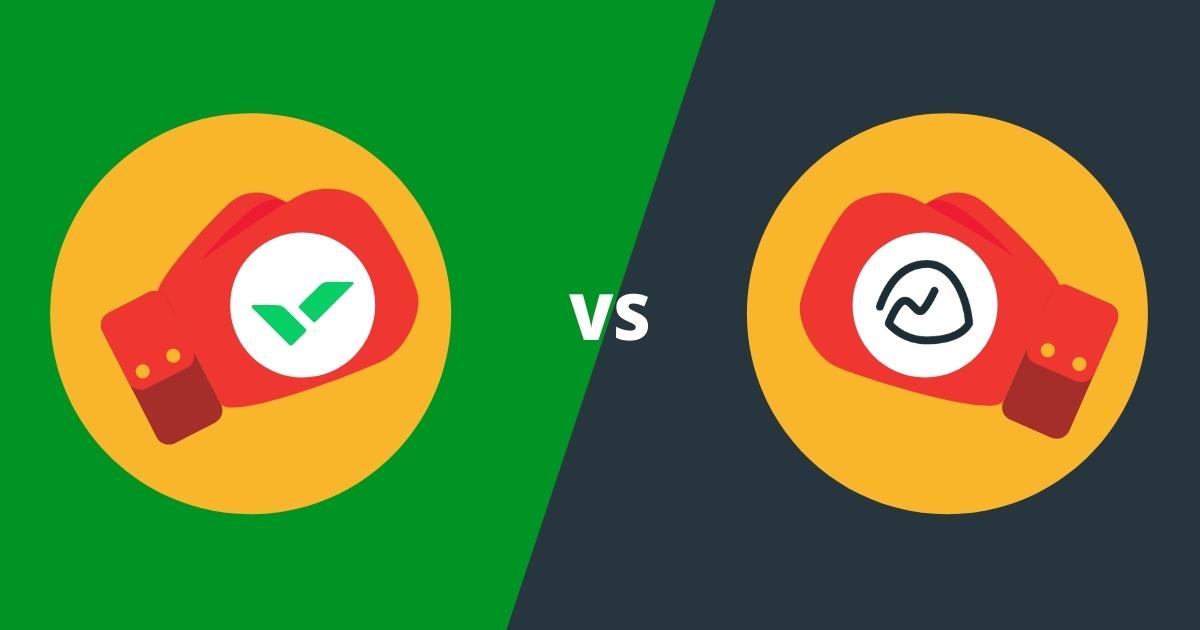So, after you’ve read about PMOs and how they contribute to successful organisations, you’re committed to establishing your own PMO. There’s many different methods to set up a PMO, each with varying degrees of success. Here are the key 8 steps you need to take to build a strong PMO for your organisation.
Why should I build a Project Management Office?
A PMO brings significant benefits to your organisation, including:
- Heightens your organisation’s visibility of their projects
- Aligns all project activities to the organisation’s strategic goals
- Optimises an organisation’s resources and portfolio
- Achieves consistent results from project governance and standardisation
- Improves communication and collaboration between teams and departments
- Shares resources, methodologies, and tools to improve project success rates
- Supports project teams so they have everything they require
If you’re still not sure of the importance of the PMO, read more about the benefits of having a PMO here.
The 8 steps to build a strong PMO
Just like any other project, we can build a strong PMO by determining clear gates and milestones you will meet and clear. However, not all the 8 steps are sequential- some occur simultaneously, or will occur at different times for your organisation. It can be challenging to understand the order of these steps, so we’ve created the below flowchart to guide you.

Step one: Establishing management buy-in & sponsorship
Having the support and backing of the senior management is a critical step. A PMO will often cause significant change as they bring in new standards and processes. If senior management does not fully buy-in to the PMO’s value, then the organisation may naturally resist the PMO’s initiatives. Without the trust and support of senior management and the wider organisation, it is challenging to build a strong PMO.
A key way to secure buy-in is to show the return on investments the PMO will bring. From there, you can provide a comprehensive cost-benefit analysis, which highlights the value of a PMO. Setting your PMO up for quick wins in the short-term can also help secure buy-in and support as the PMO grows.
Step two: Setting up the framework and planning
This is the step to set the foundational goals, the vision, and the mission of your future PMO. This allows you to align the PMO to address your organisation’s strategic objectives. At this step, you might create a charter document that clearly outlines these goals and objectives. This charter ensures that you can effectively communicate the PMO’s role to all key stakeholders.
At this level, you are making a decision about which PMO type you want to establish, and its intended function. You may use information about the size of the organisation, the number and type of projects, and the current project management maturity level to make these decisions.
Step three: Conducting assessments of your organisation and gap analysis
Beyond assessing the organisation’s current PPM capabilities, the establishment team should also assess the current project management practices. In addition, the team can feel out the organisation’s readiness to change to gain a picture of their current position. This allows the team to understand the gap between their current state, and their desired position. This evaluation positions you to build a strong PMO.
The gap analysis provides a deeper understanding of the effort required to achieve the PMO goals. This evaluation will assist you in determining a clear path to achieve the PMO’s goals. Information from surveys, interviews, and questionnaires are often very useful to gain both qualitative and quantitative data that can better inform your PMO establishment process. By collecting data from
Step four: Hiring your PMO team members
You can conduct this step simultaneously with steps six and seven, however, it’s best to complete the first three steps first. Depending on your type of PMO, you may either have PMO-centric operational staff or may hire direct PMO project managers. Team members will need to fill the functions which the PMO will provide. Therefore, you should evaluate if the candidates for your PMO have skills to match those functions.
A typical PMO will have the following roles:
- PMO director
- PMO managers
- PMO analysts and coordinators
- PMO support staff
Depending on the size of your PMO, you may need to also hire project, program, and portfolio management staff. It is best to hire your PMO director early within the process so they can use their expertise and knowledge to inform the establishment of the PMOs.
Step five: Developing the project management methodologies, processes, and templates
There are many different project management methodologies that the establishment team can use to develop their processes from. These methodologies suit different types of PMOs, organisations, and their desired functions. Once you select a methodology, the establishment team should document the process of delivering projects that the user can easily understand and apply. This can include flowcharts, step-by-step documents, a project gate evaluation system, clear communication frameworks, and much more. All teams and projects can then use this standardised template.
Team and staff members may need some training sessions to ensure everyone knows how to use the proposed methodology, process, and templates. It is important that this training is clear so team members do not revert to old habits, and thereby disrupt new processes.
Step six: Training team and project managers
The crucial disclaimer of this step is you should only commence it after you have selected the project management framework, processes, and systems. This ensures that you train employees with relevant information for the PMO’s intended operations. Often, both new and pre-existing staff don’t have a deep understanding of the systems your PMO will use, and thus need appropriate training. This is important for setting the PMO up for early success, an important factor to securing management buy-in to the PMO’s activities.
Step seven: Deploying your project management software and tools
There are many project management and PPM tools available, so it is crucial to pick the right tool for your PMOs needs. If you set out a clear criteria for the features you need, you’ll be better placed to choose the PPM solution which your organisation needs.
If your PMO has set out to improve their customer relations management system but the software is incompatible with it, then the other features of that solution are useless. Though most software will improve your productivity to a certain degree, you don’t want a software that only lifts half the load. To make it easier for you, we’ve written an introductory guide to PPM software that will help you pick the right one for your organisation.
Step eight: Implementing organisational change management
Change isn’t always easy and oftentimes people can resist it. Establishing a PMO can mean some big changes within an organisation and it is important to make sure you have a clear strategy in place to reduce resistance and ease the change process.
Key ways of doing this include:
- Involving senior management to spearhead the change
- Communicating with teams during the change process
- Reinforcing the collective and individual value of the PMO for the organisation
- Ensuring the PMO adds value to every employee
5 factors contributing to the building of a strong PMO
Though the previous steps will help you to set up a framework to build a strong PMO, there are a few other factors to consider which ensure your PMO is truly successful.
Success Factor 1: Support from senior management
We’ve mentioned it a few times in this blog post, but that’s just because senior management support is essential! In his book Leading Successful PMOs , Peter Taylor identifies that achieving organisation-wide buy-in is one of the biggest challenges of the PMO. PMO teams should ensure that all stakeholders are genuinely invested in the PMO. One of the best ways of doing that is encouraging organisational leaders to pioneer the change.
Success Factor 2: Clear vision, roles and expectations
If you clearly define the vision, roles and expectations of the PMO, it is more likely for employees to be onboard with any changes. To effectively communicate the value of the PMO to all stakeholders, you need a clear vision. Clear roles ensure everyone understands their responsibilities to collectively achieve the intended results. Clear expectations further ensure stakeholders know what a successful implementation looks like, and don’t worsen team morale towards the changes.
Success Factor 3: Building trust
Some organisations have a PMO who functions as a ‘project police’ role, waiting to nit-pick on performance and find ways to cut their budgets. A lack of trust in the PMO becomes problematic as the PMO depends transparency of its teams to be truly effective. Building trust comes from setting and communicating goals which benefit the organisation, and the PMO reaching those goals. We can’t market the PMO as ‘for everyone’ without actually getting results that benefit them.
Success Factor 4: Promoting transparency
With trust comes transparency. Many departments within organisations function as individual silos, keeping their practices, tools, and results in their own departments. This can often be the result of underlying competitiveness between departments, or simply because different departments function differently. One of the key benefits of a PMO is their ability to gather the golden methodologies of one team, and pass it on to the other teams. PMOs ensure a winning recipe is shared with everyone. To facilitate this function, it is crucial for PMOs to promote transparency and collaboration in their organisation.
Success Factor 5: Producing successful results quickly
We’ve eluded to this in the blog, but getting quick results is critical to building confidence in the PMO. Often, both management and employees can be skeptical of the PMOs value, and can view them as simply an addition step to the bureaucratic process that won’t bring much value to them. Quick success helps build trust that makes the PMOs future activities much easier and much more effective.
pmo365 is ready to help you establish a top-class PMO
At pmo365, we love everything PMO-related. So if you want to establish your PMO, we’re the perfect starting point. That’s why we’ve put together a free downloadable guide that helps you find your next PMO star player to build your PMO dream team. We can even help you find those talented PMO leaders with our free PMO job platform.
Whether you need help establishing your PMO from scratch or maybe you need a PMO upgrade, we’ve got a service for you! Make sure to book a free demo and chat with your PPM experts so we can directly help you and your PMO.













